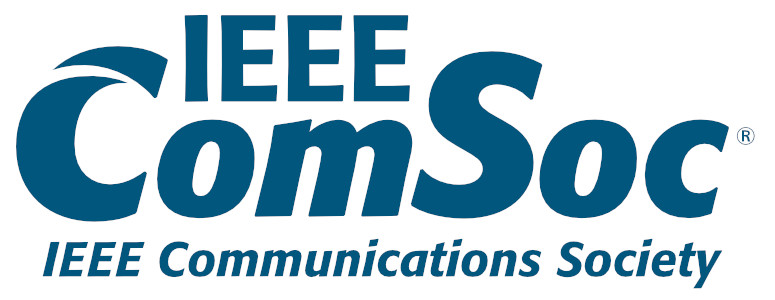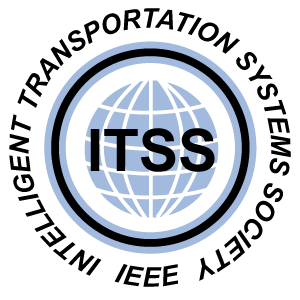2023 IEEE Vehicular Networking Conference (VNC)
April 26-28, 2023, Istanbul, Türkiye
Call for Papers
The 2023 IEEE Vehicular Networking Conference (VNC) seeks to bring together researchers, professionals, and practitioners to present and discuss recent developments and challenges in vehicular networking, connected & automated driving, and other applications. Topics of interest include, but are not limited to:
Connectivity
- Radio technologies for vehicular networks (e.g., channel measurements, propagation models, antenna design)
- V2X communication technologies, including DSRC, C-V2X, 5G/6G, and emerging technologies like VLC, mmWave, THz, or massive MIMO, beamforming
- Networking, transport and QoS management for vehicular networks
- In-vehicle communication and networking systems
Architecture and System Design
- Heterogeneous vehicular networking (e.g., multi-radio, multi-channel, multi-application, multi-technology, multi-operator) and coexistence of access technologies
- Architectures and system designs for connected automated driving incl. cloud and edge computing and IoT integration
- Security, privacy, liability, and dependability of vehicular networks
- Integration of V2C communications with on-board systems and networks
Tools & Methods
- Platforms for simulation, emulation, prototyping, measurement, field-trials, and real-world deployment of vehicular networks
- Optimization techniques (e.g., linear programming, machine learning) with unique benefits for vehicular applications
- Modeling, design, and analysis of vehicular networks and applications
Applications
- Cooperative perception and cooperative driving
- Innovative vehicular network applications and their communication requirements
- Vulnerable road user protection
- Impact assessments of vehicular networks on transportation (e.g., safety, efficiency, comfort, privacy, and environmental sustainability)
All submitted papers will be peer-reviewed. The Best Paper Award will be selected and handed out by our Best Paper committee. Conference content will be submitted for inclusion into IEEE Xplore as well as other Abstracting and Indexing (A&I) databases.
Deadlines
January 15, 2023January 27, 2023: Paper submissions due- Poster and Demo submissions due is to be announced soon
- March 1, 2023: Acceptance notifications
- March 26, 2023: Camera-ready versions due
- April 26, 2023: Conference starts
Manuscript submissions
The submitted papers must be written in English and be formatted in the standard IEEE two-column format and with a font size no less than 10-point. The mandatory IEEE template in Microsoft Word and LaTeX format can be found at the IEEE templates page. The submission process is not double-blind and authors may include their names, affiliations, and other identifying information in the submitted manuscripts. Only Adobe PDF files will be accepted for the review process. All submissions must be made electronically through EDAS.
Submission Types
The conference will consider four categories of submissions:
Full papers should describe novel research contributions and are limited in length to eight (8) printed pages including figures, tables, and references. Papers exceeding 8 pages will be declined automatically and will not be reviewed.
Short papers should be more visionary in nature and may report on work-in-progress without fully finished results. They are meant to present novel perspectives, so as to foster discussions about innovative directions and new points of view. They are limited to at most four (4) pages including figures, tables, and references, but might in many cases be even shorter. Accepted short papers will be included in the proceedings and will be given (a shorter) time for oral presentation at the conference.
Posters are especially suited for presenting controversial research directions that may generate discussion, or promising ideas not yet fully validated through complete extensive evaluation. They are limited to at most two (2) pages and their title must begin with “Poster:”.
Demonstration (demo) papers are suited for researchers to showcase their latest prototypes with media, models, or live demonstrations. They are limited to at most two (2) pages and their title must begin with “Demo:”.
Please note that these categories (in particular: full paper and short paper) target different kinds of contributions. Papers submitted to one category will NOT be moved to a different category: a paper will either be accepted in the category where it has been submitted, or it will be rejected (in particular: full papers will not be “downgraded” to short papers). Therefore, please be sure to carefully assess for yourself prior to submission which is the most suitable submission category for your paper, and to make sure that the presentation in the manuscript is well suited to the aims of this category.
Submission Process
Submitted papers must be IEEE compliant Adobe PDF files written in English, formatted in standard IEEE two-column format with a font size no less than 10-point. Reviewing is not double-blind, so authors may include their names, affiliations, and other identifying information in submitted manuscripts. Only compliant files will be accepted for review. All submissions must be made electronically through EDAS.
Remote Attendance
VNC is an in-person conference. Online presentations will only be possible in well-argued exceptional cases (e.g., travel restrictions due to COVID). Permission for remote attendance needs to be requested beforehand by writing to the organizing committee, which will evaluate requests case by case.
Authors with such granted permission will anyhow be required to attend the conference remotely, answering questions from the audience. Failing to comply with such rule will be considered a no-show, and will result in the withdrawal of the paper from the conference proceedings.
Important Dates
- Full/short paper submission deadline:
-
January 15, 2023, 23:59 AOE
January 27, 2023, 23:59 AOE (extended & final)
(Anywhere on Earth, UTC-12)
- Demo/Poster paper Submission Deadline:
-
February 15, 2023, 23:59 AOE
- Acceptance notification:
- March 1, 2023
- Camera ready paper due:
March 26, 2023
April 2, 2023
April 7, 2023- Conference:
- April 26-28, 2023


